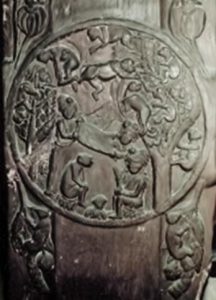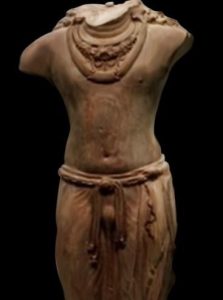Stone carving has been practised in India from prehistoric times. Excavations continue to uncover 3000 year old engraved stones. Carving stones to manufacture tiny weapons was the major focus of early stone craft. Stone is used to make arrowheads, spears, javelin points, and hammers. Both hunting and cooking were done using these implements. Stone carving grew into an art form as time progressed.
For making the artforms, Stones are extracted from a quarry by the process of cutting. The qualities of the stone such as grain or texture, or the softness or hardness of the stone defines its usability.
Procedure of Making Stones
- The craftsman begins by examining the stone and its inherent pattern.
- The basic figure is scraped from the slab using Hammer after the design has been formed on the slab.
- Shaping is done with a Chisel and Hammer once the basic figure is completed. A pointed chisel is commonly used for minor carvings.
- Before cutting, the stone is submerged in boiling water for 24 hours. The stone is smoothed and whitened as a result of this procedure.
- To minimise heat build-up while carving, the artist sprays water at regular intervals.
- The final figure is smoothed out using sandpaper or files when the carving is completed.
Type of Stones
- There are varieties of stone found in India.
- Igneous rocks: Hard granite in the deccan.
- Sedimentary rocks: Coloured sandstones in the northern plains of India.
- Metamorphic rocks: Soft soapstone, marble, and limestone hardened over centuries.
- Minerals are what give rocks their characteristics, such as colour, lustre, and strength.
- Soft soapstone allows for delicate, intricate carving.
- Sandstone is fragile and must be handled with extreme care.
- Colour: This ranges from the golden yellow (Jaisalmer) to soft pitted and speckled stones (Fatehpur Sikri and Mathura).
- Usage: Sculptors of India have been using these stones for the past five thousand years.
- Mahabalipuram granite sculptures and Khajuraho sandstone figures demonstrate the different ways a stone is treated in the hands of an artist.
Types of Stone Works:
- Relief Structured Panels:
- It has carvings only on one side. They might be shallow or deep.
- Most often, the other side is flat and embedded within masonry work.
- The depth and height of a low relief can be 1-3 cm.
- It can almost look like a three-dimensional sculpture.
- Three-dimensional Figures:
- Figures of this type can be observed from all sides.
- Moreover, they can be used to construct free-standing pillars like Ashoka did.


Low Relief: Mahapaki Jataka, Bharhut ,Torso of Vishnu in red sandstone, Mathura
Patrons of Crafts:
- The Village: Specifically designated parts of the village were occupied by potters, carpenters, stone sculptors, masons and goldsmiths. Keeping artisans allied to dominant agricultural groups was the main purpose of the jajmani system.
- In this system, the artists worked under the protection and hospitality of the landowning class.
- During a festival, the landowner or the jajman would request the potter to make ceremonial pots and diyas and in return pay him in kind with food for the rest of the year.
- Itinerant Craftsmen: Among the artisans who travel from village to village, a blacksmith is one example. The crafts communities would often receive grain and food, clothing, and money as gifts, thus avoiding the need to cultivate land for food.
- The Town: Individual artists in the towns formed guilds to protect their interests and to ensure the quality of their work.
- In addition to enforcing work standards, negotiating prices, and punishing wrongdoers, the guild protected the group and its occupational interests.
- The artist was paid in kind and with land grants or produce from land.
- The Court: Rulers often invited artists and craftsmen like sculptors to work in their court. Artists like these are what provide a sense of past cultures and eras.
- The rulers of ancient times knew that the construction of magnificent buildings, shrines, and sculptures would convey a message of greatness throughout the world.
- Artists who attached themselves to the court found employment in the royal workshops and were given payment for an assignment not only in kind but also in land.
- In Akbar’s royal diary, payment to artists for their work and special awards for excellence is recorded.
Conclusion
India has traditionally prided itself on its cultural legacy. Stonecraft is one of the art forms that has brought honour to the country numerous times. Excavations of old stone crafts appear to be equally energising. The best aspect is that the amazing art form has survived in the country.
The temples in this area have a strong interest in stone crafts. Temples all around the country, particularly in eastern India’s Odisha and in southern India’s Tamil Nadu, are works of art in stone.
 Profile
Profile Settings
Settings Refer your friends
Refer your friends Sign out
Sign out












